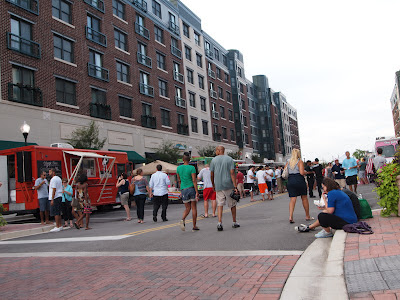Along with the almost limitless
gastronomic array, food trucks often turn sidewalks, plazas, parks and even
vacant lots into veritable social events.
Food trucks present a spirited
pedestrians realm and an indispensable third- place, with a possible
socio/ecological advantage to brisk and mortar eatery: reducing the number of
motorist traveling across town, especially during lunch hour. In addition, this
approach to lunchtime may curtail the endless lines of idling cars waiting for
a turn at the drive-thru window.
Most of these mobile cafeterias take advantage of social sites, like Facebook and Twitter to maximize turnout at there upcoming locations. Some trucks encourage followers to vote on prospective locations for upcoming appearances. This is a new take on one fast-food giant’s adage: ‘…have it your way.’
Beside the current spike in gas
prices and the perpetual parking frustrations, there seem to be an element of nostalgia
to explain the precipitous growth of this food truck revolution. Perhaps, as a
society we are yearning for a simpler time, - a bygone époque when some food
staples were delivered to our doorsteps, or probably a personal childhood memory,
in which the cacophony of the ice-cream truck engender a type of neighborhood-wide
hysteria.

















































